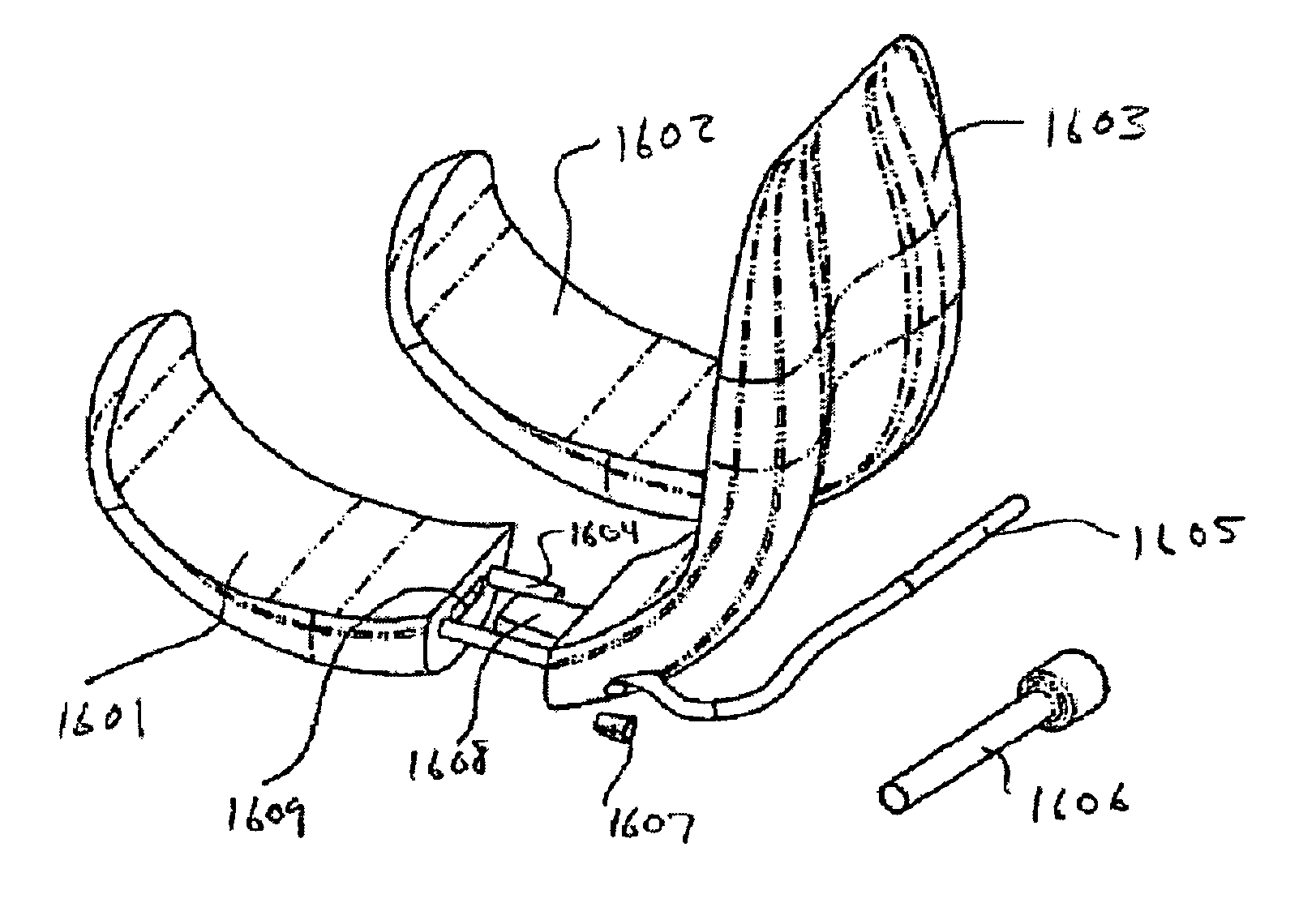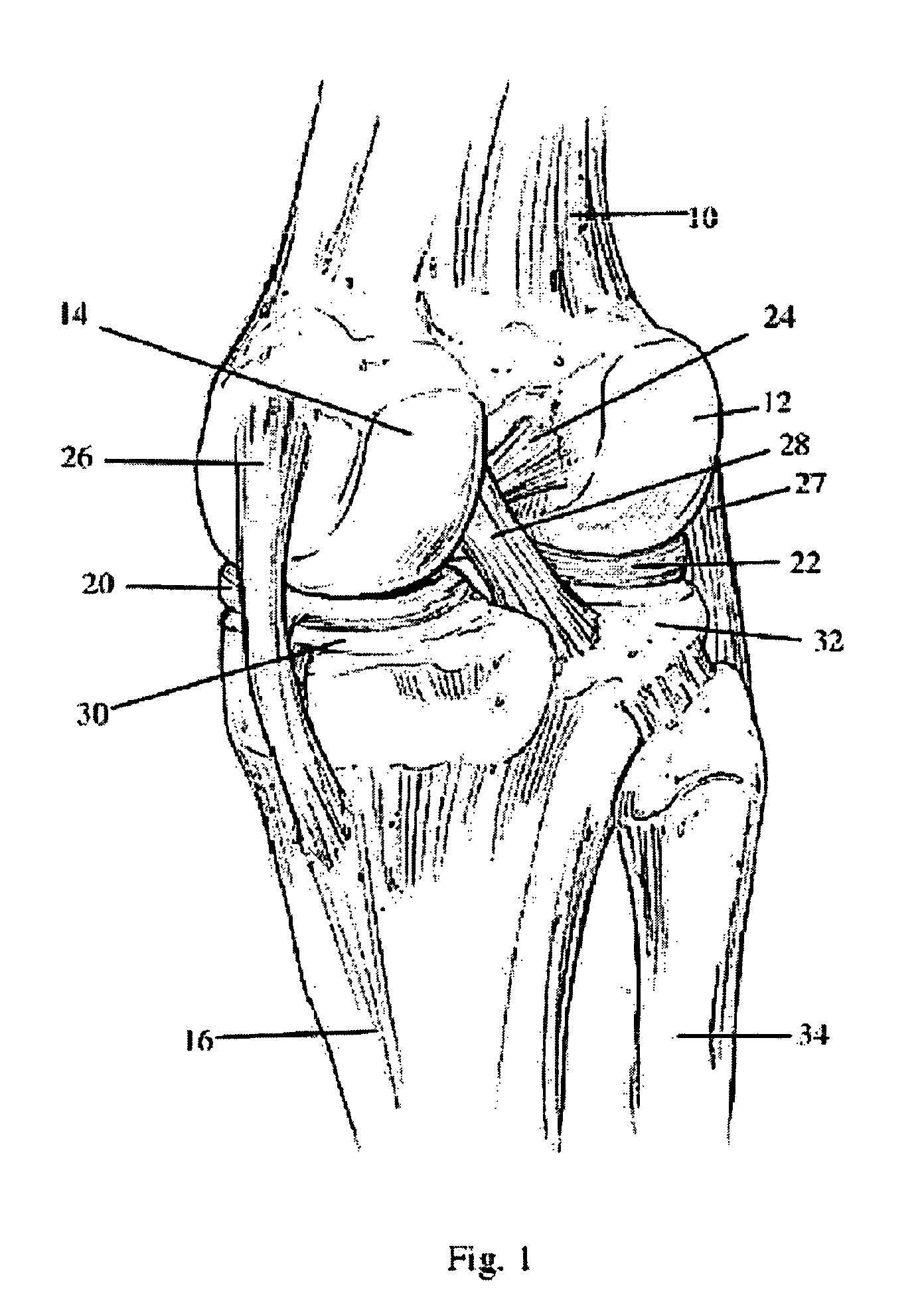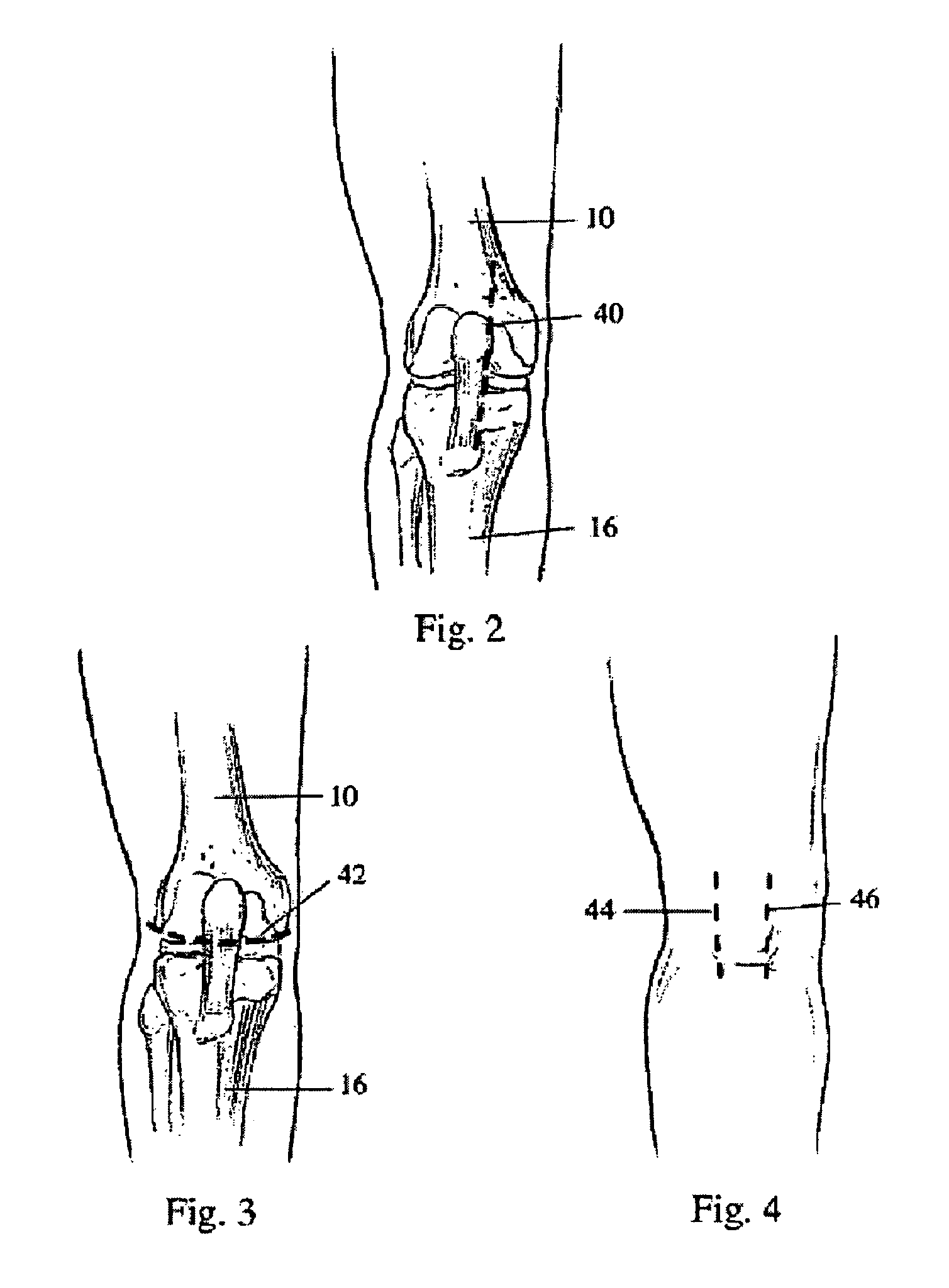Modular apparatus and method for sculpting the surface of a joint
a technology of modular components and joints, applied in the field of implants for use, can solve the problems of accelerating wear and degradation of polyethylene bearing surfaces, surgically challenging procedures, and difficulty in all total joint replacements, including ankles, knees, hips, etc., and achieves the effects of facilitating the passage of implants, and sufficient strength and flexibility
- Summary
- Abstract
- Description
- Claims
- Application Information
AI Technical Summary
Benefits of technology
Problems solved by technology
Method used
Image
Examples
Embodiment Construction
[0070]Knee Joint Anatomy and Surgical Approaches. FIG. 1 illustrates the general anatomy of the knee joint. The femur 10 has the lateral femoral condyle 12 and the medial femoral condyle 14 on its knee-joint articulating surface. The tibia 16 has the lateral meniscus 22 (generally opposite the lateral femoral condyle 12) and the medial meniscus 20 (generally opposite the medial femoral condyle 14) on its knee-joint articulating surface. The ligaments include the anterior cruciate ligament 24, the posterior cruciate ligament 28, the medial collateral ligament 26 and the lateral collateral ligament 27. The medial tibial condyle 30 and the lateral tibial condyle 32 support the menisci 20 and 22, which in turn support the femur 10. Additionally, the fibula 34 engages the tibia 16.
[0071]Typically, a total knee joint replacement involves replacing the articular surfaces of the lateral femoral condyle 12, the medial femoral condyle 14, the medial tibial condyle 30 and the lateral tibial co...
PUM
| Property | Measurement | Unit |
|---|---|---|
| length | aaaaa | aaaaa |
| length | aaaaa | aaaaa |
| flexible | aaaaa | aaaaa |
Abstract
Description
Claims
Application Information
 Login to View More
Login to View More - R&D
- Intellectual Property
- Life Sciences
- Materials
- Tech Scout
- Unparalleled Data Quality
- Higher Quality Content
- 60% Fewer Hallucinations
Browse by: Latest US Patents, China's latest patents, Technical Efficacy Thesaurus, Application Domain, Technology Topic, Popular Technical Reports.
© 2025 PatSnap. All rights reserved.Legal|Privacy policy|Modern Slavery Act Transparency Statement|Sitemap|About US| Contact US: help@patsnap.com



